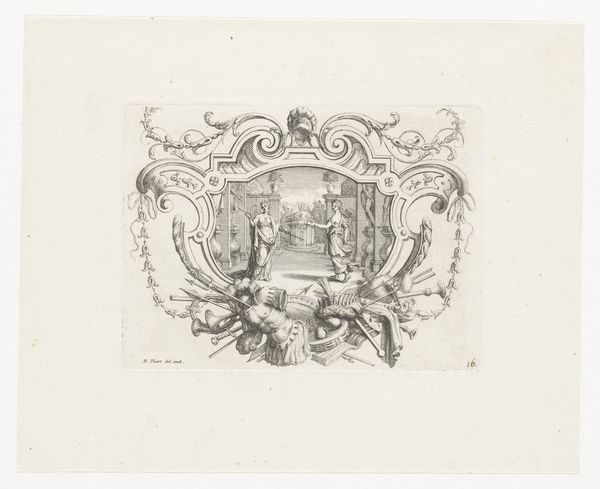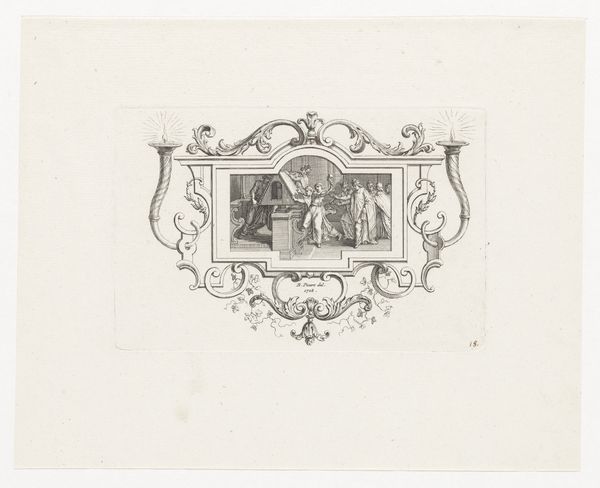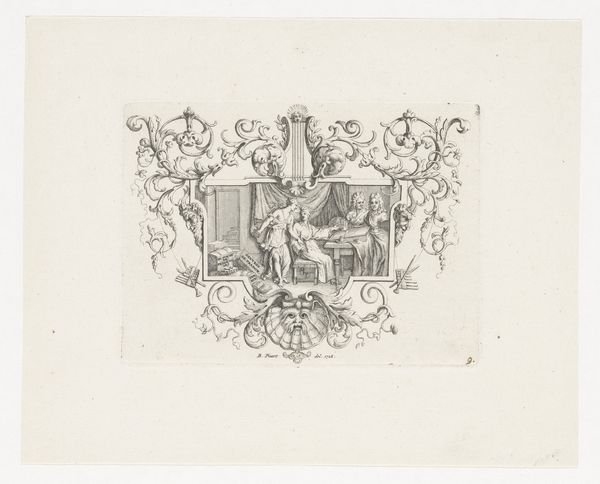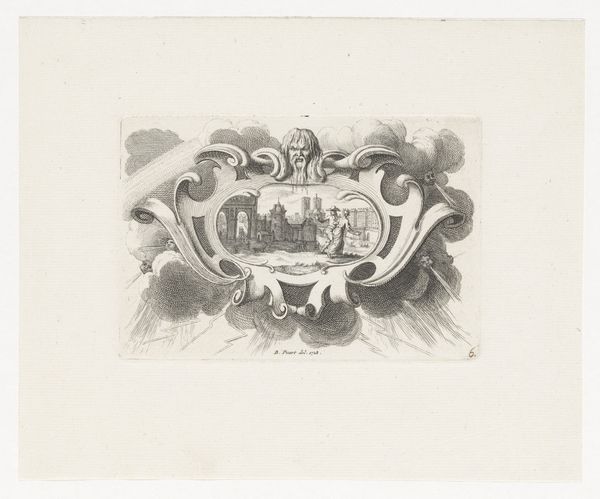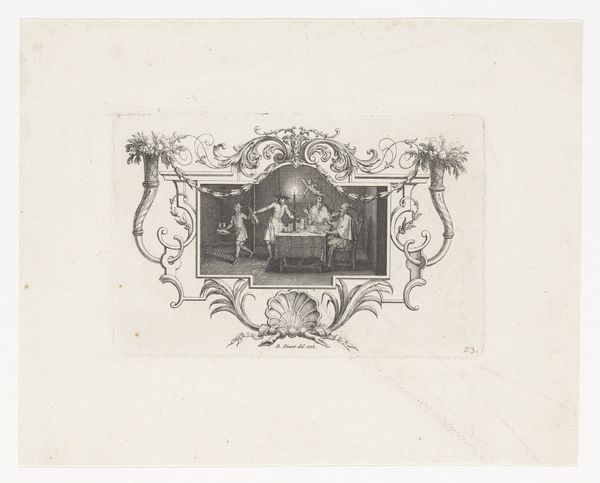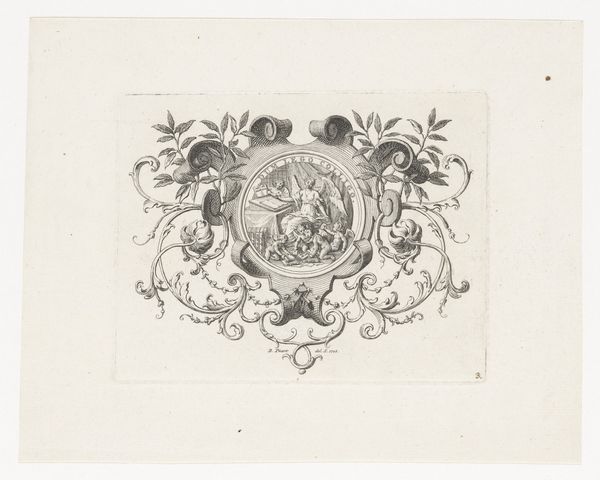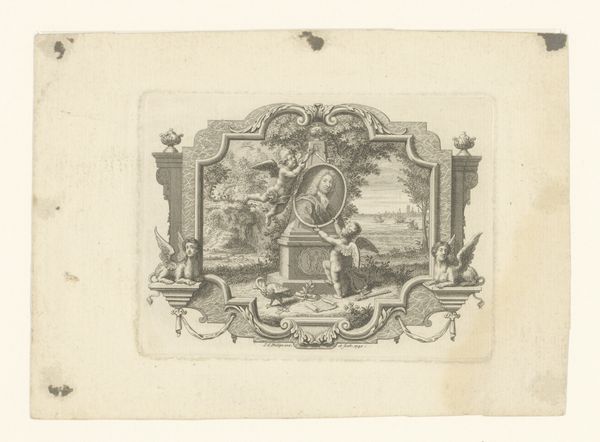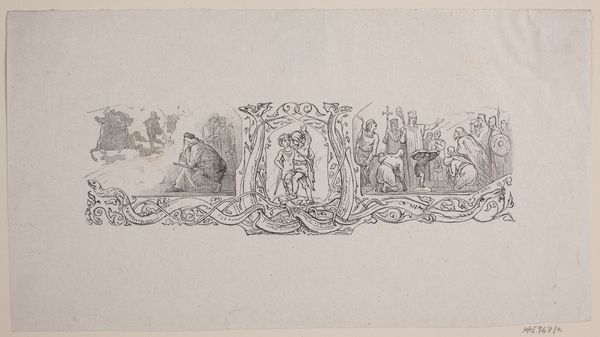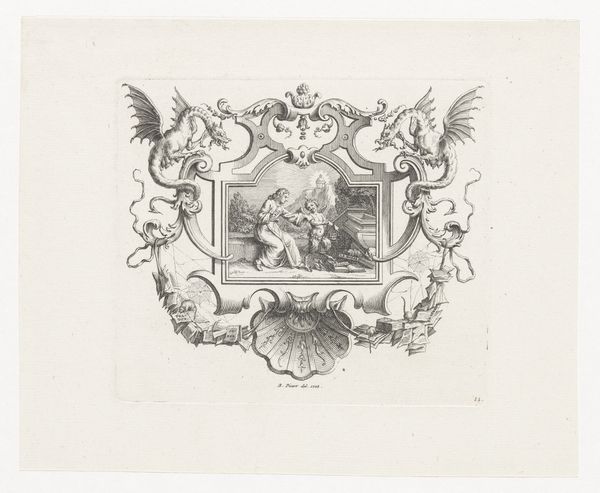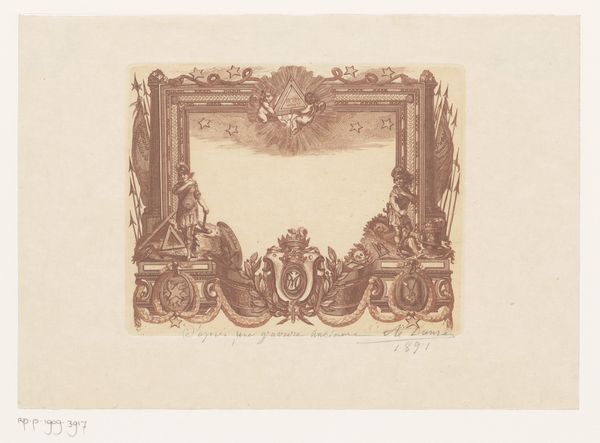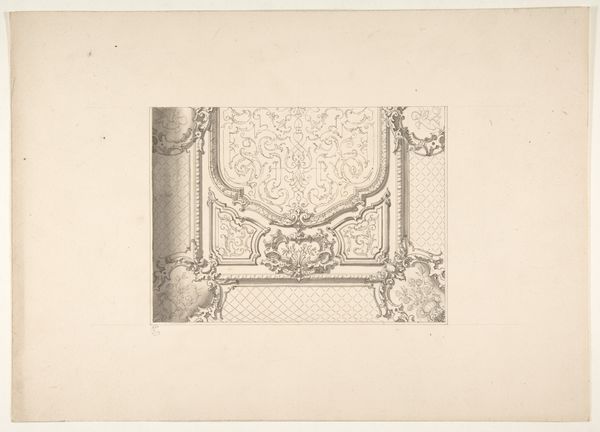
print, engraving
#
baroque
# print
#
landscape
#
engraving
Dimensions: width 89 mm, height 132 mm
Copyright: Rijks Museum: Open Domain
Curator: This delightful little print is "Liefdespaar in tuin," or "Couple in a Garden," by Bernard Picart, dating back to 1728. Editor: Intimate. That’s the word that leaps to mind. The baroque frame feels intentionally ornate, as if setting the scene for a forbidden rendezvous, what do you make of that framing choice? Curator: Absolutely, it is rather inviting. It is like peeking through a keyhole, almost voyeuristic. The formal garden and embracing figures draw you in immediately; the garden architecture suggests control, contrasting the unconstrained embrace of the figures. Editor: A delicious contradiction, hinting at power structures through garden design but challenging those norms with figures flaunting their intimacy, it is political theatre. How can a moment of tenderness exist amidst systems designed to oppress such impulses? Curator: Yes! The placement within the print seems like a conscious juxtaposition, reflecting society's conflicted views on love, freedom, and maybe the simple human desire for closeness. The border with cherubs is the best; a visual pun or a subtle social jab! Editor: Perhaps Picart encourages a revolution of tenderness, reclaiming space for marginalised affections, using symbolism and composition to confront the artifice of morality and its function in service of class and control. That period witnessed tumultuous socio-economic upheaval with the emergence of new social orders and challenges to the status quo. Do you think Picart was conscious of those challenges? Curator: The Baroque flourish does seem to suggest that this intimacy is not easily attainable for all; but more specifically for this demographic in their situation and standing. Looking back at the work now, it’s so lovely to see it anew. It's made me consider that while social struggles remain real, it’s the intimate and tender moments between us that define and shape our own individual resistance. Editor: Indeed, from revolution to garden, and back again—such potent whispers in lines etched on copper. Thanks to Picart’s careful engraving technique, his visual declarations remain timeless!
Comments
No comments
Be the first to comment and join the conversation on the ultimate creative platform.


